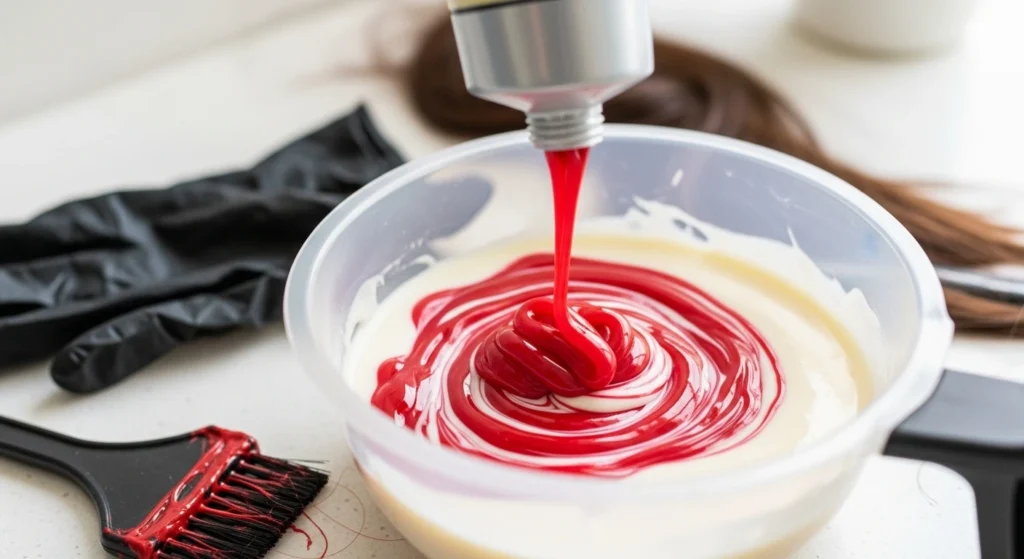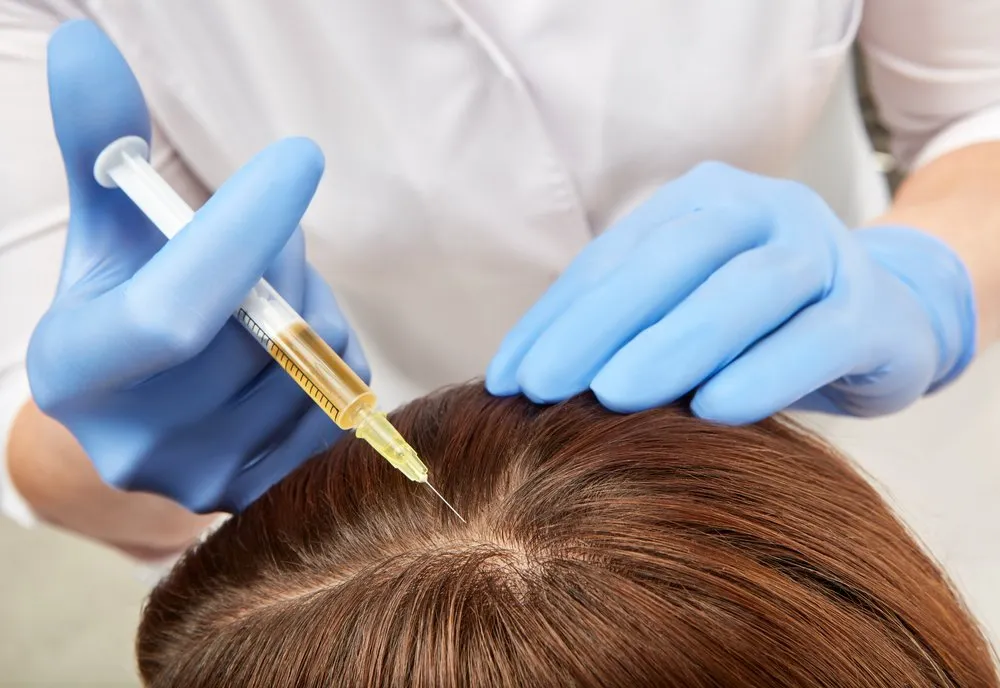Noticing hair thinning or breakage after coloring your hair? You’re not alone. Hair loss due to hair dye is a surprisingly common concern — but will it grow back? This article explains what causes dye-related hair damage, whether it’s reversible, and how you can promote healthy regrowth.
You’ll also discover expert tips, treatment options, and preventative measures. Read on to regain confidence in your hair, guided by expert advice and medically sound solutions.
Can Hair Dye Really Cause Hair Loss?

Hair dye itself doesn’t usually cause permanent hair loss, but it can weaken hair and irritate the scalp enough to trigger temporary shedding or breakage.
Types of Hair Dye and Their Effects on Hair Health
- Permanent Dyes: Penetrate deep into the hair shaft using ammonia and peroxide. These are the harshest and can dry out or damage the hair over time.
- Semi-Permanent Dyes: Less aggressive, but still contain chemicals that may irritate sensitive scalps.
- Henna and Plant-Based Dyes: Generally safer, but allergic reactions are still possible.
Ingredients That Can Damage the Hair Shaft or Follicles
Common hair dye ingredients like paraphenylenediamine (PPD), ammonia, and resorcinol can strip the hair of natural oils, weaken its structure, and trigger scalp inflammation — all of which can lead to hair loss or stunted growth.
Difference Between Hair Breakage and True Hair Loss
- Breakage happens along the hair shaft — often due to dryness and brittleness.
- True hair loss involves shedding from the root, potentially due to follicle inflammation or shock to the scalp.
Why Does Hair Fall After Dyeing?
Dyeing your hair might seem harmless, but certain reactions can lead to excessive shedding or delayed regrowth.
Chemical Overload and Scalp Irritation
Repeated exposure to bleach and dyes can overload your hair and scalp, breaking down the hair cuticle and causing inflammation.
Allergic Reactions and Contact Dermatitis
If you’re allergic to ingredients like PPD, dye can trigger red, itchy, inflamed scalp conditions that interrupt normal hair growth cycles.
Excessive Heat Styling After Coloring
Colored hair is more vulnerable to heat damage. Flat irons, curling wands, or blow dryers can amplify weakness in chemically processed strands.
Underlying Conditions Triggered by Dye Use
In some cases, dye-related stress may contribute to telogen effluvium, a temporary condition where hair prematurely enters the shedding phase due to scalp trauma or systemic stress.
Will Hair Loss From Dyeing Grow Back?
For most people, yes — but recovery depends on how the hair was damaged.
Temporary vs. Permanent Hair Loss Explained
- Temporary Hair Loss (Telogen Effluvium): Typically reversible within 3–6 months.
- Permanent Hair Loss: Rare, but can occur if hair follicles are severely damaged by chronic inflammation or scarring.
Regrowth Timeline — What to Expect
- Weeks 1–4: Reduced shedding if dye use and heat styling are stopped.
- 1–3 Months: New baby hairs begin to appear if follicles remain healthy.
- 3–6 Months: Noticeable improvement in volume and thickness.
- 6+ Months: Full recovery in most cases.
Signs Your Hair Is Recovering
- Less hair in your brush or drain
- Soft, fuzzy new hair along the hairline
- Scalp feels calmer, less itchy or inflamed
When to Seek Professional Help
If hair loss persists beyond 6 months, or if bald patches or scalp pain develop, consult a dermatologist or certified hair restoration expert.
How to Promote Hair Regrowth After Hair Dye Damage
There’s plenty you can do to speed up recovery and protect your follicles.
Stop Chemical Treatments Temporarily
Avoid further coloring, bleaching, or relaxing your hair for at least 2–3 months to allow time for healing.
Nourishing Hair Care Routine
- Use sulfate-free, moisturizing shampoos
- Deep condition weekly to restore elasticity
- Apply lightweight leave-in treatments with ingredients like keratin or biotin
Scalp Massage and Improved Blood Flow
Daily scalp massages using oils like rosemary or castor oil can stimulate circulation and support follicle health.
Balanced Diet and Hair Supplements
- Eat foods rich in iron, zinc, and biotin
- Consider supplements like Viviscal, Nutrafol, or collagen peptides for extra support
PRP, Minoxidil & Other Professional Treatments
- PRP Therapy involves injecting platelet-rich plasma into the scalp to boost growth
- Minoxidil (Rogaine) can be used to reactivate dormant follicles
- Low-Level Laser Therapy (LLLT) also enhances recovery speed

How to Prevent Hair Loss from Hair Dyes in the Future
Prevention is the best strategy, especially if you dye your hair often.
Choose Ammonia-Free or Natural Hair Dyes
Opt for safer alternatives like organic dyes, semi-permanents, or plant-based colors.
Patch Testing and Allergy Awareness
Always do a 24-hour patch test behind your ear or on your arm to rule out allergic reactions before applying dye to your scalp.
Use of Heat Protectants and Moisturizing Masks
When heat styling, apply protective serums and follow with a hydrating mask to reduce protein loss.
Expert Advice: What Dermatologists and Hair Surgeons Recommend
- Avoid coloring freshly washed hair — the natural oils help reduce irritation.
- Never dye hair if the scalp is already irritated or injured.
- If you notice persistent thinning, get a scalp analysis or trichoscopy to assess follicle health.
- Seek medical guidance before using Minoxidil or strong hair regrowth products.
Common Recovery Mistakes to Avoid
- Continuing to dye while experiencing hair loss
- Skipping patch tests
- Using harsh shampoos
- Ignoring early signs like scalp burning or excessive shedding
FAQs About Hair Dye and Hair Loss
Can hair dye cause permanent hair loss?
Usually no, unless the follicle has been scarred due to chemical burns or allergic reactions.
How long does hair take to regrow after dye damage?
It depends on the extent of damage, but most people see improvement within 3–6 months.
What shampoo is best for chemically damaged hair?
Look for sulfate-free shampoos with ingredients like biotin, keratin, or argan oil.
Is it safe to dye hair again after shedding?
Only after full recovery — and ideally with safer, less harsh dyes.
How can I tell if my hair follicles are damaged?
If you see bald patches, scalp sensitivity, or no regrowth after months, consult a specialist for diagnosis.
Take Your Next Step
If you’re struggling with hair loss due to hair dye and wondering whether it will grow back, don’t leave it to chance. Book a consultation with Dr. Rana Irfan — one of Pakistan’s leading ABHRS-certified hair restoration experts. Get personalized treatment, advanced therapies like PRP, and trusted advice tailored to your hair’s unique needs.
